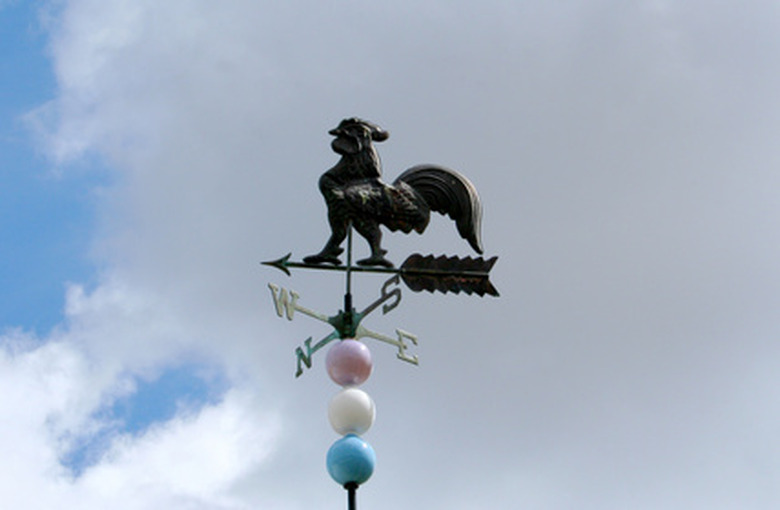Types Of Old-Fashioned Weather Instruments
Greek philosophers Aristotle and his pupil Theophrastus showed interest in weather phenomena more than three centuries before the start of the Common Era (CE). However, measuring tools and instruments were needed for the study of weather as a science, meteorology, to flourish. Functional weather instruments began with Galileo's invention of a rudimentary thermometer in the late 1500s. Many old-fashioned instruments continue to be used in private settings and small weather stations.
Anemometers
Anemometers
Italian architect Leone Battista Alberti (1404-1472) is credited with inventing the first useful anemometer, an instrument to measure wind speed. Alberti's anemometer used a swinging-plate; the angle at which the plate was displaced by the force of wind determined wind speed. In 1846, Irish astronomer Thomas Romney Robinson developed the rotating-cup anemometer that is still used in small weather stations. Robinson's old-fashioned anemometer uses four cups attached to a vertical rod at right angles. As the wind rotates the cups, the speed of the turns is converted to wind speed.
Barometers
Barometers
The barometer, an instrument for measuring air pressure, was invented by Italian mathematician and physicist Evangelista Torricelli in 1643. Using observation of how a siphon works, Torricelli used a mercury-filled tube to determine atmospheric pressure at sea level. In an old-fashioned mercury barometer, the weight of the atmosphere forces mercury up a calibrated tube. The heavier the air, the more pressure exerted on the mercury.
Hair Hygrometer
Hair Hygrometer
Water-absorbing properties of hair were used in 1783 to develop the first hygrometer, an instrument for measuring humidity. This old-fashioned hygrometer was calibrated by first determining the length of a hair at total dehydration and at total saturation, or 0 percent humidity and 100 percent humidity, respectively. Relative humidity then could be calculated by using these two set points.
Sling Psychrometer
Sling Psychrometer
As an instrument for measuring humidity, the sling psychrometer came into use during the 19th century. This old-fashioned weather instrument used two identical mercury thermometers mounted on a wooden paddle. The bulb of one of the thermometers is wrapped in wet absorbent materials. A person then whirls (slings) the handle around through the air and the thermometer with the wet bulb cools rapidly compared to the other due to evaporation properties of water. The temperature difference between the two thermometers can then be converted to relative humidity.
Thermometers
Thermometers
Galileo's thermometer measured heat by observing the changes in the density of water in glass-filled bulbs. This method of liquid in a sealed glass bulb or tube was used to design and develop a number of old-fashioned instruments that work on the principle of the changes in water when heated and cooled to measure temperature changes.
References
- "Science 101 Weather"; Trudy E. Bell; 2007
- University of Wisconsin-Madison: Torricelli Barometer
- Rice University: The Galileo Project | Science | Thermometer
Cite This Article
MLA
Benge, Vicki A.. "Types Of Old-Fashioned Weather Instruments" sciencing.com, https://www.sciencing.com/types-oldfashioned-weather-instruments-6849423/. 24 April 2017.
APA
Benge, Vicki A.. (2017, April 24). Types Of Old-Fashioned Weather Instruments. sciencing.com. Retrieved from https://www.sciencing.com/types-oldfashioned-weather-instruments-6849423/
Chicago
Benge, Vicki A.. Types Of Old-Fashioned Weather Instruments last modified March 24, 2022. https://www.sciencing.com/types-oldfashioned-weather-instruments-6849423/
